All our timber is sourced as locally as possible – this is something we have done from the beginning. We believe that Scottish hardwood has a character and quality that can’t be found in imported timber. We buy our round wood logs from local landowners who manage their woodlands in a sustainable way. We have a chain of custody for each log that tracks its provenance from Tree to Table. The samples below are an indication of the beauty inherent in our local timber. Each log we process is unique therefore its characteristics may be different form the samples shown below.
Species overview
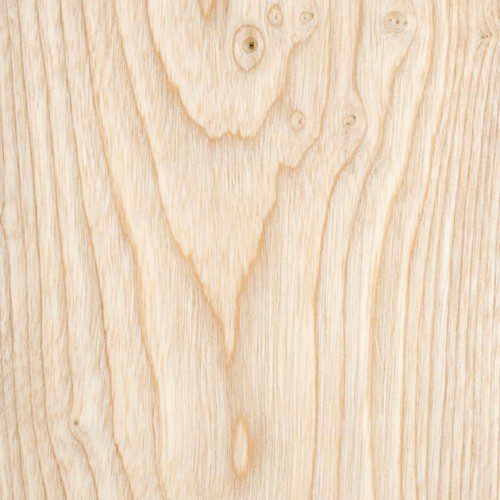
Ash
European or Common Ash
Fraxinus excelsior, Family: Oleaceae
A popular wood with a pronounced, coarse grain pattern which is generally straight grained. The sapwood is creamy white to pale tan in colour – sometimes with a pinkish hue, with the heartwood being light to mid brown. Olive Ash is the term used to describe the wood when there is alot of darker heartwood present. Other unusual characteristics include Rippled and Marbled Ash which happen when the grain grows in wild patterns.
Generally straight grained, Ash is a popular wood with a pronounced course grain pattern. When dried it is one of the hardest native species generally available in the UK historically used for tool handles and frame machinery. The sapwood ranges from creamy white to pale tan in colour and occasionally has a pinkish hue, while the heartwood is light to chocolate brown in colour. Olive ash is a general term used to describe when there is a lot of darker heartwood present – it is not a separate species. Other unusual grain patterns include Rippled and Marbled ash which occur, most frequently in older trees, when the grain grows in wild patterns.
A favourite wood to use it is fairly easy to work, planes and sands well and takes a high sheen finish. The tonal difference between heart and sapwood makes it a striking wood to use for book matched door panels and feature board table tops.
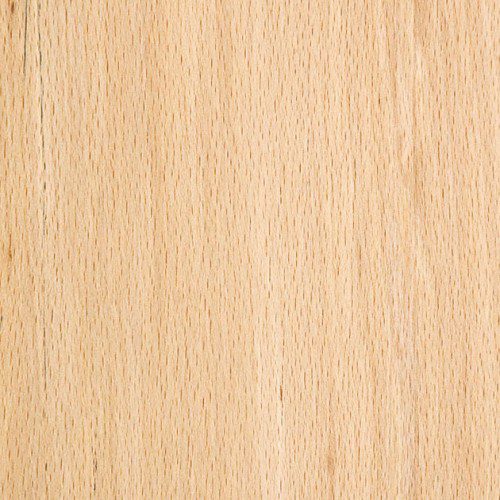
Beech
European Beech or Common Beech
(Fagus sylvatica), Family Fagaceae
A straight grained wood with a fine and even texture. The heartwood is a pale cream to pink/brown in colour often with darker coloured veining. Flamed Beech describes when this colouration is pronounced. Spalted Beech is the result of a fungus growing on the log before conversion and leads to an attractive pattern of black veining and irregular colour patterns.
Beech is pale cream to pink/brown in colour often with darker coloured veining. Close grained with a straight, fine and even texture it doesn’t splinter in use and as a result it frequently is used for chopping boards and cooking utensils. Variations include Flamed Beech – where the darker veining is more pronounced, and Spalted Beech – the result of fungus growing through the log which gives a random pattern of black veining and irregular colour patterns. Once dried the fungus is inert although care needs to be taken when sanding to avoid inhaling spores. Although attractive, Spalted Beech isn’t particularly strong due to the fungal decay, so care needs to be taken when selecting wood.
Beech is a strong and relatively heavy wood that is good to work and finishes well. The pinkish hue is not to everyone’s taste but Spalted and Flamed beech are popular. It has a tendency to move a lot with seasonal variations in temperature and humidity, sometimes dismissively being referred to as ‘bendy beech’. With careful selection and good design this movement can easily be accomodated.
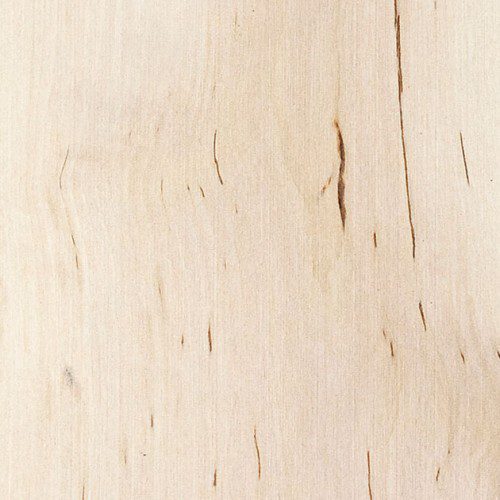
Birch
Silver Birch
Betula pendula, Family Betulaceae
A generally straight grained and uniform wood with a fine texture. The heartwood is creamy white to light tan in colour often with a slight pink or golden hue. Darker flecks are often present which can be pronounced. Unusual characteristics include Pippy and Marbled grain patterns.
A uniform wood with a straight grain and fine texture although scottish birch tends to have more wild grain. Creamy white to light tan in colour often with a slight golden or pink hue. Darker flecks are often found in the grain which can be quite pronounced. Variations of grain include Pippy Birch – small pin knots in clusters, and Marbled Birch where the grain has grown in wild swirls and quilts.
An undervalued wood often overlooked for bespoke furniture due to its association with cheap scandinavian flatpack furniture. Quite difficult to work with the grain frequently picking out when planed – it is also prone to splitting along the grain. Sands well and finishes to high sheen – marbled birch is particularly attractive.
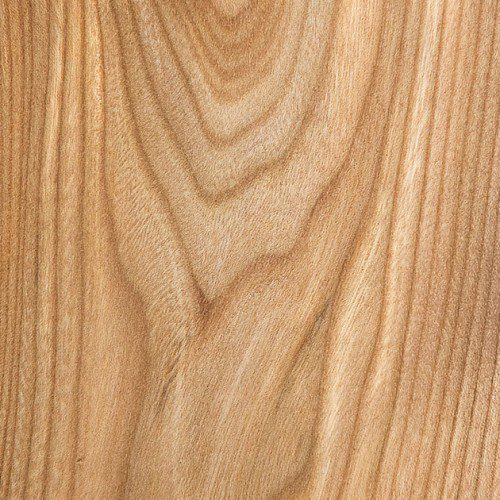
Elm
English, Dutch and Wych Elm
Ulmus procera, hollandica and glabra, Family Ulmaceae
A popular wood with a coarse texture and irregular grain pattern. Wych Elm tends to be straighter grained often with a distinctive green streak. English and Dutch Elm generally grow more irregularly and have more complex grain patterns as a result – often including pockets of ingrown bark. The heartwood is mid to dark brown in colour but can also have a strong red tone. Due to Dutch Elm Disease much of our elm is from standing deadwood – trees that have been killed by the disease. The colouration is often more varied in this sort of timber and can include lighter tan and golden colours. Burr and Pippy Elm describe the pin knots and larger burrs in the wood. This can vary from light ‘cats paws’ to dense areas of heavy burr.
A very popular wood with irregular grain pattern and course texture. Wych Elm is generally straighter grained and often has a distinctive green streak running along the grain. English and Dutch Elm grow more irregularly with a more complex grain pattern. Generally the heartwood has a warm hue that is mid to dark brown with a red tone with the sapwood being lighter tan colour. Due to Dutch Elm Disease most elm comes from standing deadwood trees – trees that have been killed by the disease yet not fallen. The coloration tends to be darker in dead trees as there is no living sapwood. Burr and Pippy Elm describe the pin knots and larger burrs found in the wood. This can varry from light ‘cats paws’ to dense areas of heavy burr.
Elm is best described as a very ‘woody’ wood that can be quite hard to work. The grain, colour and texture all give a wood with immense character that is highly prized. Burr elm in particular is much sort after and due to Dutch Elm relatively hard to source. As a result prices are getting high for good quality timber with the best logs frequently being exported abroad.
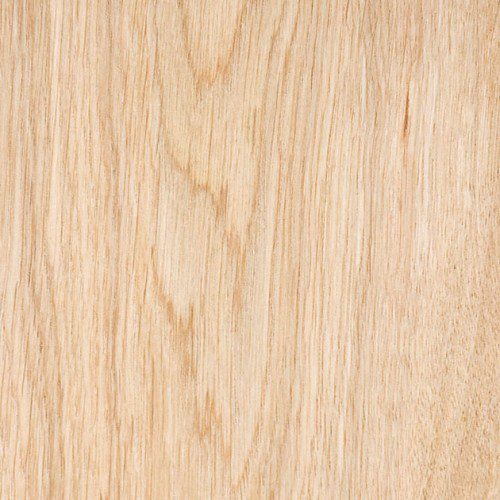
Oak
Native/ British or European Oak
i. Sessile or Durmast Oak ii. Pedunculate Oak
i. Quercus sessiliflora or petraea ii. Quercus robur/pendunculata. Family: Fagaceae
A traditional favourite with a generally straight grained appearance although the grain can also be irregular and cross grained. Light tan to medium brown in colour oak tends to have a uniform colouration. Quarter saw oak displays attractive silvery figuration on the surface from the medullary rays. Pippy and Burr oak are fairly common characteristics of Scottish oak and like Elm this can vary from light to heavy coverage. Wood that includes knots and splits is often referred to as Rustic Oak. Brown and Tiger oak refer to wood that has been attacked by ‘Beef Steak Fungus’ which causes the wood to turn a darker brown.
A firm traditional favourite Oak is generally straight grained with a course texture. Native oak tends to be less straight and more characterful than European oak – partly due to growing conditions and forestry practises. Light tan to medium brown oak tends to have a uniform coloration. When cut ‘quarter sawn’ the surface of the wood shows the attractive silvery figure of the medullary rays inherent in oak. Pippy and Burr oak are common characteristics of native oak and can vary from light to heavy coverage. Rustic oak is a catch all term to describe wood with lots of knots, splits and wild grain – these defects give real character to the wood and when used correctly can look stunning. Brown and Tiger oak refer to wood that has been attacked by ‘Beef Steak Fungus’ which causes the wood to turn a darker brown. The darkest oak is Fumed oak which is made by fuming the wood with ammonia. The ammonia reacts with the tannin in oak and turns the wood a dark chocolate brown colour.
Oak is a traditional timber that everyone is familiar with and sits in the middle of the native wood colour spectrum. Lighter than oak – Birch and Sycamore, darker than oak – elm and fumed oak etc. Due to its familiarity it can be a bit of a safe choice but the variety of grades and characteristics available in native oak ensure that it is never a boring choice. Oak is a good timber to work with although it is prone to splitting and surface checking.
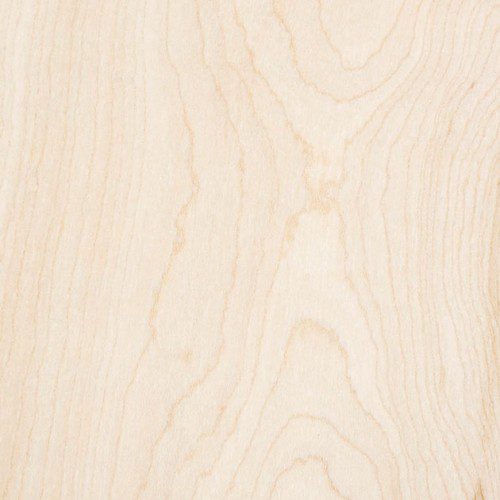
Sycamore
Sycamore Plane, Great Maple, Plane
Acer pseudoplatanus, Family Aceraceae
A straight grained and uniform wood with a natural lustre. Creamy white to light tan in colour often with a degree of Marbling of Flaming similar to Beech. Quarter sawn boards have an attractive lacey figure. Unusual characteristics include Rippled and Pippy Sycamore and on occasion light spalting.
Sycamore is a straight grained and uniform wood with a fine texture. Creamy white to light tan in colour often with a green flash similar to elm. The heartwood can be darker in colour almost orange / brown. Marbling and Flaming colour variations are often found similar to those in Beech. Quarter sawn boards have an attractive lacey figure that is highly prized. Ripple sycamore is highly figured wood that has an undulating grain pattern that reflects light giving a ripple effect. Often used in musical instrument making and high end furniture. Other variations include Pippy and Burr sycamore and on occasion light spalting similar to beech can be found.
A beautiful wood that is easy to work and finishes to a natural lustre that is buttery smooth – very similar to maple. A personal favourite that deserves to be more popular than it currently is in the UK.
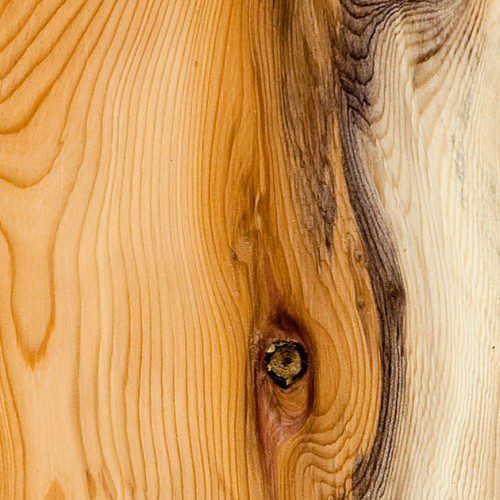
Yew
Common Yew or European Yew
Taxus baccata Famil: Taxaceae
The grain from this distinctive species can be straight, curly and irregular often with live and dead knots. The heartwood is golden orange-brown with streaks of purple or dark brown veins. The sapwood is a cream white colour and gives an attractive contrast to the heartwood. Clusters of pin knots are often present further adding to the visual appeal of this species.
Not actually a hardwood but included here due to its popularity and distinctive qualitities. Yew wood can be straight grained although more commonly it is curly and irregular with lots of live an dead knots. The heartwood is golden orange-brown with streaks of purple/dark brown veins. The sapwood is creamy white and contrasts nicely with the heartwood. Clusters of pin knots are usually present adding a further visual interest to the wood.
Hard to work the wood frequently picks out when planed. It is easily sanded and finishes to a very smooth sheen. Very prone to splitting it is a challenging wood to work with. Not readily available in wide boards or large quantities it is usually used for decoration and wood turning.
